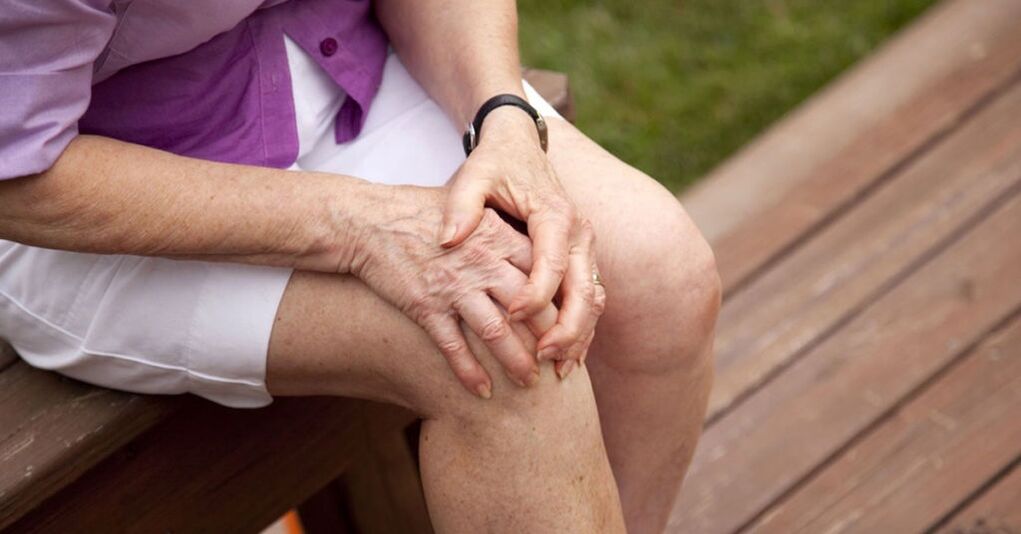
Joint pain is not only a problem for the older generation.Young people often find this too.In some situations, painkillers help to relieve unpleasant symptoms, in others, drug treatment is required, and in the most difficult cases, the help of a surgeon is required.
Causes of joint pain
The cause of joint pain can be either mechanical or infectious.After an injury, no one is surprised by pain when moving.But when the pain occurs for no apparent reason, the patient does not understand how to act to get rid of the problem.
However, bacterial infections can cause pain.When pathogenic microorganisms penetrate the synovial fluid, they infect nearby soft tissues.Infection can come along in several ways:
- Results from prosthetics, due to sterilization of poor material quality.
- Due to deep tissue damage due to skin infection;
- After any surgical intervention is performed in violation of the rules of antiseptic treatment.
In addition to bacteria, the joints are also threatened by fungi.These microorganisms also enter the synovial fluid as a result of infection received during surgical intervention.
Some people associate stomach ailments or bladder damage with pain in the knee or elbow joints.However, there is a connection.When the gastrointestinal tract is affected by bacterial infections, toxins and colonies of microorganisms enter the bloodstream and travel through the body with the bloodstream.Some of them settled in the common cavity.Common risks include:
- diseases of the gastrointestinal tract;
- damage to the urinary system;
- venereal disease;
- Rubella;
- angina;
- infectious mononucleosis;
- pneumonia.
This shows that improper treatment of infectious diseases can lead to more serious consequences than one might imagine.For example, late-diagnosed tonsillitis, or patient refusal of prescribed antibiotics can cause disability.This is due to the fact that Streptococcus, which causes tonsillitis, is recognized by the immune system in the same way as cells from heart valves and intra-articular tissue.If antibiotic therapy is not used as the main treatment, the immune system itself will destroy the joint tissue while fighting the infection.
Viral infections also affect the joints.These are diseases such as:
- Rubella;
- Hepatitis C;
- Hepatitis B;
- herpes.
Humanity has not yet produced an effective medicine that will fight the virus.The only exception is the drug acyclovir, which is effective against the herpes virus.Other diseases of viral etiology can only be defeated by the human immune system.To protect yourself from infections that can destroy joint tissue, you can boost your immune system with vaccinations.Vaccination against rubella and hepatitis is included in the mandatory calendar.
How to relieve pain
Orthopedists use non-steroidal anti-inflammatory drugs as a symptomatic treatment for joint pain.
If the pain is unbearable, you need to contact a specialist who will install the restraints.This is a procedure that allows you to inject anesthesia into the joint itself and into the radicular zone of the nerve endings.But this solution to the problem is temporary.After 10-16 hours, the patient's condition will return to its original position.
What is meant by joints?
Losing joints can be caused by a number of reasons.On the one hand, the crisis indicates that the intra-articular substrate is depleted as a result of a violation of the mass water balance.On the other hand, one problem, which can be heard when bending or straightening the joint to its maximum position, is the sound made by gas bubbles bursting in the joint fluid.
If there is a constant crunching sound when moving, you need to reduce the load on the moving parts.It is better to eliminate the cause through the orthopedic traumatology office.Self-administration of advertised drugs will not only not help, but can also cause harm.X-rays will show the condition of the bones and interarticular cartilage.If it turns out that it runs out, individual recommendations will be given.If you treat the pain with non-steroidal anti-inflammatory drugs when you have worn out the cartilage, you will only be able to reduce the sensitivity in the joint while continuing to use them.Over time, thin cartilage causes inflammation of the intra-articular tissue, which will lead to arthrosis.
Arthritis or arthrosis
For those who do not have a medical education or do not personally face problems with bones and joints, the two concepts: arthritis and arthrosis look the same.The similarity of the names is explained by the fact that all diseases related to the joints have a root "art".The prefix "ia" indicates the inflammatory process.This can be seen in examples of other terms: rhinitis - inflammation of the sinuses, bronchitis - inflammation of the bronchi;Otitis - Inflammation of the ear.However, this term does not indicate the causes of inflammation, which means it cannot be a diagnosis.For example, bronchitis can be viral and bacterial.This means that the treatment tactics in both cases are completely different.Arthritis is inflammation in the joints, with no known cause.
Arthritis is a disease that affects the interarticular cartilage.Unchecked arthritis sooner or later leads to arthrosis.The inflammatory process in the metabolism interferes with the joint, which tissues do not receive proper nutrition and become thinner.This is where the destruction of cartilage tissue occurs.
Prevention of joint diseases
Proper nutrition ensures health to all body systems.Sufficient amounts of protein, calcium, iron and vitamins allow you to provide cartilage tissue, ligaments, synovial fluid and bones with everything they need.
In addition, an active lifestyle will keep your muscles toned, thanks to which they provide additional support to the entire skeleton in general, and the joints in particular.And to protect yourself from dangerous viral infections that affect the joints, you need to be vaccinated on time.



















